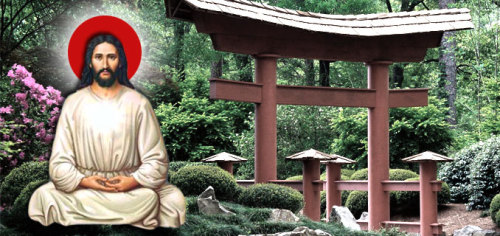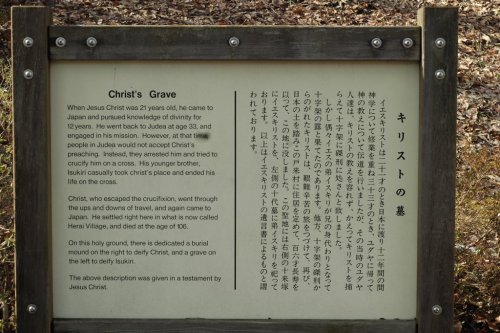peashooter85:Jesus in Ancient Japan? In a small town called Shingo, located in the Sannohe District
peashooter85:Jesus in Ancient Japan? In a small town called Shingo, located in the Sannohe District of Aomori Province, Japan, the local people have a maintained a very unusual and interesting tradition for generations. According to the people of Shingo, their small town is the final resting place of Jesus Christ, the holy savior of mankind in Christian theology. According to the legend, during Jesus’ younger days, a period of time which is little mentioned in the Gospels, Jesus moved to Japan in order to study religion and theology. At the age of 33, Jesus moved back to Judea to preach to his people. As we all know, his religious and spiritual message was not well received, and he was condemned to be executed by Crucifixion. However, instead of being crucified and resurrected, his younger brother Isukiri took his place on the cross while Jesus escaped back to Japan. Once in Japan, Jesus settled down as a garlic and rice farmer, married and raised three children, then died at the age of 106. He was then interred in a small tomb at a local hillside, a site which today is maintained and managed by a local yogurt factory.Every year in spring, an annual Christ Festival is held where a religious ritual is performed to “console the spirit of Jesus”, a ritual that has been staged by the local tourism bureau since 1964. There is also a museum called the “Legend of Christ Museum”, which houses relics of the Japanese Jesus and sells souvenirs such as coffee mugs and coasters. Entrance fee to the museum is 100 Yen (about 85 cents). It is interesting to note that only one resident of Shingo is a Christian, and most of the 20,000 yearly visitors of the grave are non-Christians as well. However the people of Shingo passionately maintain that their grave is the real deal. Local scholars claim that the village was founded by a group of diaspora Hebrews, and cite as evidence cultural attributes of ancient residents during the time, and a handful of words in the local dialect which kinda sort of somewhat sound like Hebrew. However the ultimate proof is in a set of scrolls, memoirs and the last will and testament of Jesus himself. Unfortunately the scrolls were destroyed in a firebombing raid during World War II, however the Legend of Jesus Christ Museum houses a translated replica. The replica scrolls are signed, “Jesus Christ; Father of Christmas”. -- source link


